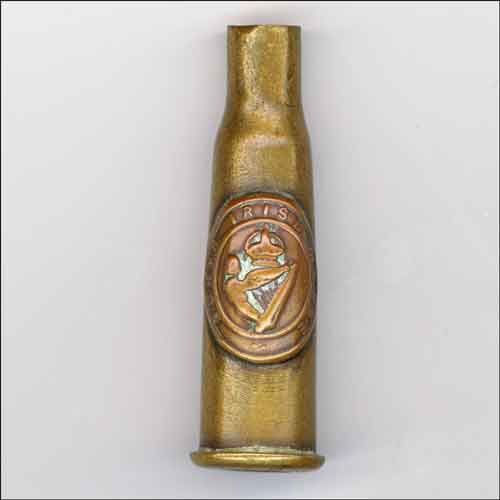Private William Henry Howe
William Henry (Bilshey) Howe was born on 5 February 1891 at Derryad, Lisnaskea, County Fermanagh, the third of six children of farmer and RIC pensioner Gerard Howe and his wife Maria (nee Moore). His father died when he was just six years old. Educated at the Vaughan Charter School at Tubridd, County Fermanagh, by the time of the 1911 Census he was living at Derryad with his mother and five siblings and working on the family farm.
Howe enlisted in the North Irish Horse between 26 and 28 January 1916 (No.2092). He embarked for France in 1916 or the first half of 1917, where he was posted to one of the squadrons of either the 1st or 2nd North Irish Horse Regiment.
In September 1917 the 2nd NIH Regiment was dismounted and most of its men, together with some surplus to the needs of the 1st NIH Regiment, were transferred to the infantry. After training at the 36th (Ulster) Division Infantry Base Depot at Harfleur, the men were formally transferred to the Royal Irish Fusiliers on 20 September and soon after were posted to the 9th (Service) Battalion – re-named the 9th (North Irish Horse) Battalion – joining it in the field at Ruyaulcourt. Howe was issued regimental number 41419.
Howe saw action with the battalion at the Battle of Cambrai in November and December 1917. During the fighting, either in the village of Moeuvres or near Marcoing, he was wounded in his right foot. Evacuated to the UK for treatment, it is unlikely that he saw further overseas service during the war.
Howe was discharged as no longer fit for military service on 6 October 1919 and was granted a part-pension as a result of his wound.
After the war he returned to Lisnaskea, later moving to Belturbet, County Cavan, with his brother. They lived in the gatehouse of the local Church of Ireland rectory, now demolished. Howe is said to have suffered from shell-shock.
The cartridge case in the image below, from an 8mm French Lebel round, decorated with a small North Irish Horse button, was owned by Private Howe.

Image Copyright © Phillip Tardif with all rights reserved as set out in this Use of Material policy.
